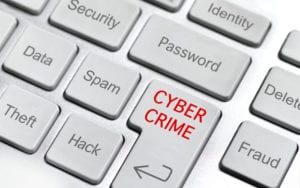California’s Title 24 energy standards have long been some of the most demanding efficiency guidelines in the country, and the 2013 updates (which went into effect July 1, 2014) continue that tradition. While lighting and plug-load-control requirements have gotten more attention among electrical professionals, new metering rules outlined in Section 130.5 could pose equal challenges for consulting specifying engineers and their clients. Section 130.5(a), which defines metering provisions for new electrical service, is one of two additions to Title 24 that new electrical service installations will need to address. (The next post in this series addresses the second new addition, Section 130.5(b)).
Under the 2013 standards, newly installed electrical service in nonresidential buildings – including service from the local electric utility and that from other sources, such as photovoltaic systems, but excluding emergency power sources – now, at a minimum, must have permanently installed, user-accessible metering of total electrical service. Additionally, that metering must provide both instantaneous kilowatt-hour (kWh) demand readings, as well as the ability to supply kWh demand information for a user-resettable period.
While it might seem like a utility meter would suffice for this purpose, most utility meters don’t offer the ability to monitor usage for a user-resettable period, and this is a critical element in a code designed to engage building owners and managers in their facilities’ energy use. As the saying goes, “what can’t be measured can’t be managed.” User-resettable meters make it easier to run energy studies and enable before/after comparisons of any future efficiency upgrades.
As shown in the table outlining Section 130.5(a) requirements, larger facilities require even more detailed metering under the 2013 revisions. In addition to the base-level functions described above, metering for new electrical services rated more than 250 kilovolt-amperes (kVA) also must provide information on historical peak demand in kilowatts. For services rated over 1000 kVa, metering must include kWh-usage per rate period. Yes, this functionality is redundant to what any basic utility meter would provide, but the regulations require all mandated capabilities be incorporated into a single meter for these largest energy users.
So, how can system designers meet these upgraded requirements? The best approach is always relative to the situation at hand. One approach would be to install a stand-alone meter adjacent to the panelboard or switchboard at the service entrance. However, with space often limited in cramped electrical rooms, another approach would be to incorporate metering inside the electrical distribution equipment. Schneider Electric offers a range of energy and power meters that meet or exceed the requirements of Title 24 and many of these meters can be incorporated within the equipment, itself, as a more space-friendly solution.
Because we know the new metering requirements can be complicated to address, Schneider has experts available through its Professional Engineer Portal you can call on for expert advice.



Conversation
We interested in the above subject and the there is big change to use this technology at Saudi Electricity Company.
I am able to play big role in this business. See my profile at LinkedIn!
Thanks
Wally Kabbara
The Powerlogic Controls that were integrated on my last big project, were extremely useful, easy to set up with BCMS and other mapping software! The smart metering focus, is a step in increasing awareness and enhancing client awareness! Especially those on demand metering, TOU8 @.19 on demand cost plus your highest KW demand for the billing month can be significantly reduced if you do not exceed x KW, the cost can drop significantly! However, if load shedding is not available, there are hundreds of ways to reduce cost! If looking at smart metering as what cant be measured, can’t be managed, there are tools on line for large customers, that have realtime and customizable slide demand intervals, which needs to be carefully reviewed not only if you integrate new monitoring but to ensure that you completely understand the ramifications if on load shed, thermal storage and or agree to be put on the load shed programs sometimes offered by utility companies. One additional awareness is where, as mentioned above, do you either submeter a device or just integrate to the utility providers online service is; it must be engineered to fit the clients business needs, associated risk analysis and CBA or return on investment! There are restrictions on most utility providers switch gear and to pick up not only the load side voltage with CT’s or VM’s I have seen many times, where you, the client cannot access or open the utility providers panels at the meter lixations, so, don’t forget to add a thought of not only the load side monitoring on the gear but the primary line side of the breaker or breakers. You can gain additional benifets if engineered correctly, to monitor both! Thanks Drew for the updates!
Know how can system designers meet these upgraded requirements? you should meet or exceed the requirements of Title 24 and many of these meters can be incorporated within the equipment.
title 24 energy consultant
It’s good to know more about title 24 changes. I actually like that the energy standards are really demanding, when it comes to efficiency, like you said. I wish the rest of the country had standards like that so that everyone was more efficient.